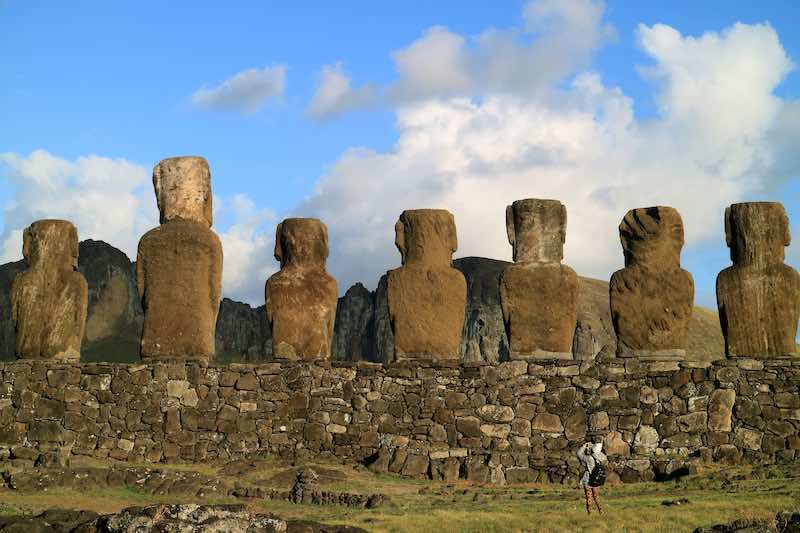
Travelers often wonder what the world’s most interesting destination might be. While there are many contenders for this title, one destination that is sure to astound and amaze is Easter Island.
This small Chilean island, home to just over 6,000 people, is best known for its nearly 1,000 monumental statues, called moai, which were carved by the island’s original inhabitants between 1250 and 1500 CE.
Easter Island is a popular tourist destination for those who love history and culture. Visitors can explore the island’s many archaeological sites, including the Rano Raraku quarry, where many of the moai were carved; Ahu Tongariki, which features 15 standing moai; and the ceremonial village of Orongo, with its breath-taking views of the crater lake.
In addition to its archaeological wonders, Easter Island is also home to a vibrant Polynesian culture that can be experienced through dance, music, and traditional food.
The Moai of Easter Island
The most famous attraction on Easter Island is the moai, massive stone statues carved by the island’s original inhabitants between 1250 and 1500 CE. These statues range in height from 2 meters (6 feet) to an impressive 10 meters (33 feet) and weigh up to 86 tons!
Although the precise meaning of the moai is still unknown, they are thought to represent deceased ancestors who were venerated by the island’s inhabitants.
The statues were originally placed facing inland towards various clan houses, but many of them were toppled over time.
Today, many moai have been restored to their original positions, providing visitors with an awe-inspiring sight as they stare out over the island’s landscape.
A Unique Culture
In addition to its impressive Moai statues, Easter Island is also home to a unique culture. The island’s original inhabitants were Polynesians who arrived in canoes sometime around 1200 CE from other parts of Polynesia.
These early settlers brought their own language and traditions, passed down through the generations, and are still practiced today.
One such tradition is the ‘Tapu,’ a system of beliefs that dictated what activities could or could not be carried out on certain days. For example, certain foods could only be eaten on certain days, and pregnant women were not allowed to enter certain areas of the island.
An Amazing Landscape
Easter Island is a volcanic island measuring just 63 square miles (163 square kilometers). Despite its small size, the island offers an incredible variety of landscapes ranging from sandy beaches and rocky cliffs to lava fields and lush green hills. There are also three volcanoes on the island: Terevaka (the highest point on the island at 1,675 feet/510 meters), Poike (the oldest volcano), and Rano Kau (which forms a large crater that is now a lake). Thanks to its diverse landscape and rich history, Easter Island was declared a UNESCO World Heritage Site in 1995.
Easter Island’s Natural Beauty
![]()
![]()
![]() In addition to its fascinating history and culture, Easter Island is also a stunning natural paradise. The island is covered in lush green hills and surrounded by a dramatic coastline with cliffs dropping off into the bright blue waters of the Pacific Ocean. There are also several pristine white beaches where you can relax in the sun or go swimming.
In addition to its fascinating history and culture, Easter Island is also a stunning natural paradise. The island is covered in lush green hills and surrounded by a dramatic coastline with cliffs dropping off into the bright blue waters of the Pacific Ocean. There are also several pristine white beaches where you can relax in the sun or go swimming.
Final Words
Easter Island should be at the top of your list if you’re looking for an amazing travel destination that will leave you with memories to last a lifetime.
From its fascinating history and culture represented by the moai statues to its stunning natural beauty, there’s something for everyone on this small Chilean island. Plan your trip today and see why Easter Island is one of the most interesting places in the world!